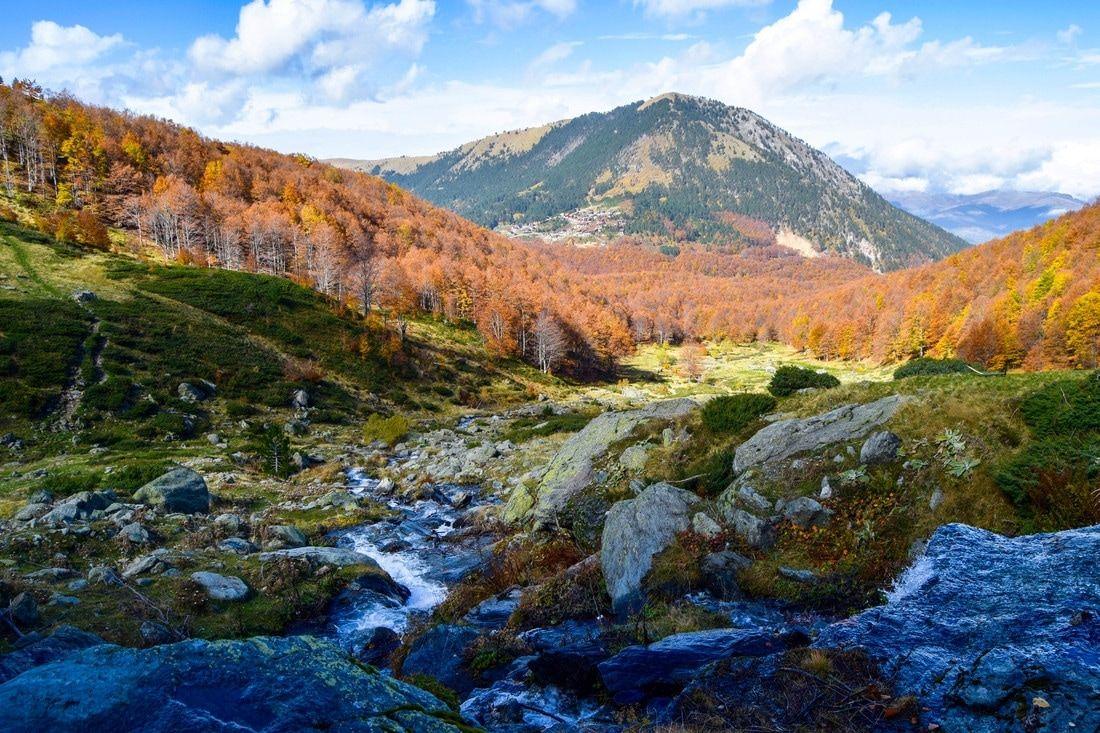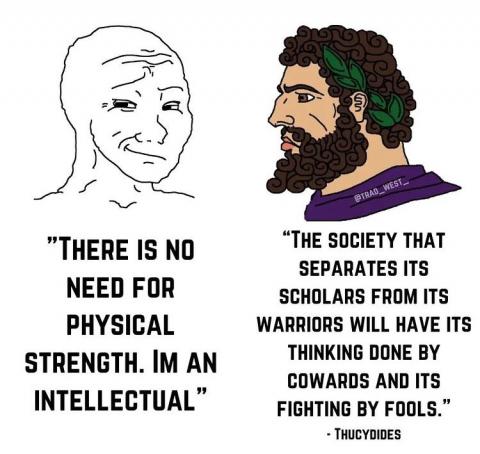Some time ago, I was stunned when an American Conservative asked me on internet: "Why Kosovo can't be a nation?" I cringed, and thought to myself: "Well, that's so obvious!" But then I realised: people can't know everything, and can't be aware of everything, and it was just a legitimate question, no matter how the answer had been obvious to me. So, I wanted to answer that question from my Serbian perspective.
But what's obvious isn't always simple. And a simple question can be complicated.
So, let's make a little travel through the history with our newest time machine.
We are now travelling through Jesuit/Marxist Matrix of lies and deceptions, and it will be a bumpy ride. Our time machine can be maximally set to 5508 BC when traditional Serbian calendar begins, but we most likely wouldn't have the time for such a long ride. So, let's stop at the end of the Western Roman Empire.
Time machine
We came across a bump at the end of the 5th century AD, and our time machine nearly exploded. But we are still fine. Few decades after the fall of the Western Roman Empire, somewhere around 490 AD, the Serbians have managed to restore their state in the Balkans under Svevladović dynasty. During the next centuries, Serbian refugees from the north of the Danube river, who have escaped during the wars with the Romans and the Roman occupation through the 2nd, 3rd, and 4th century, are now returning to their liberated Fatherland. This is what Jesuit/Marxist history calls "great migration of Slavs".

Picture 1. Map of the Eastern and the Western Roman Empire. The border goes through the middle of the Serbian lands in the Balkans.
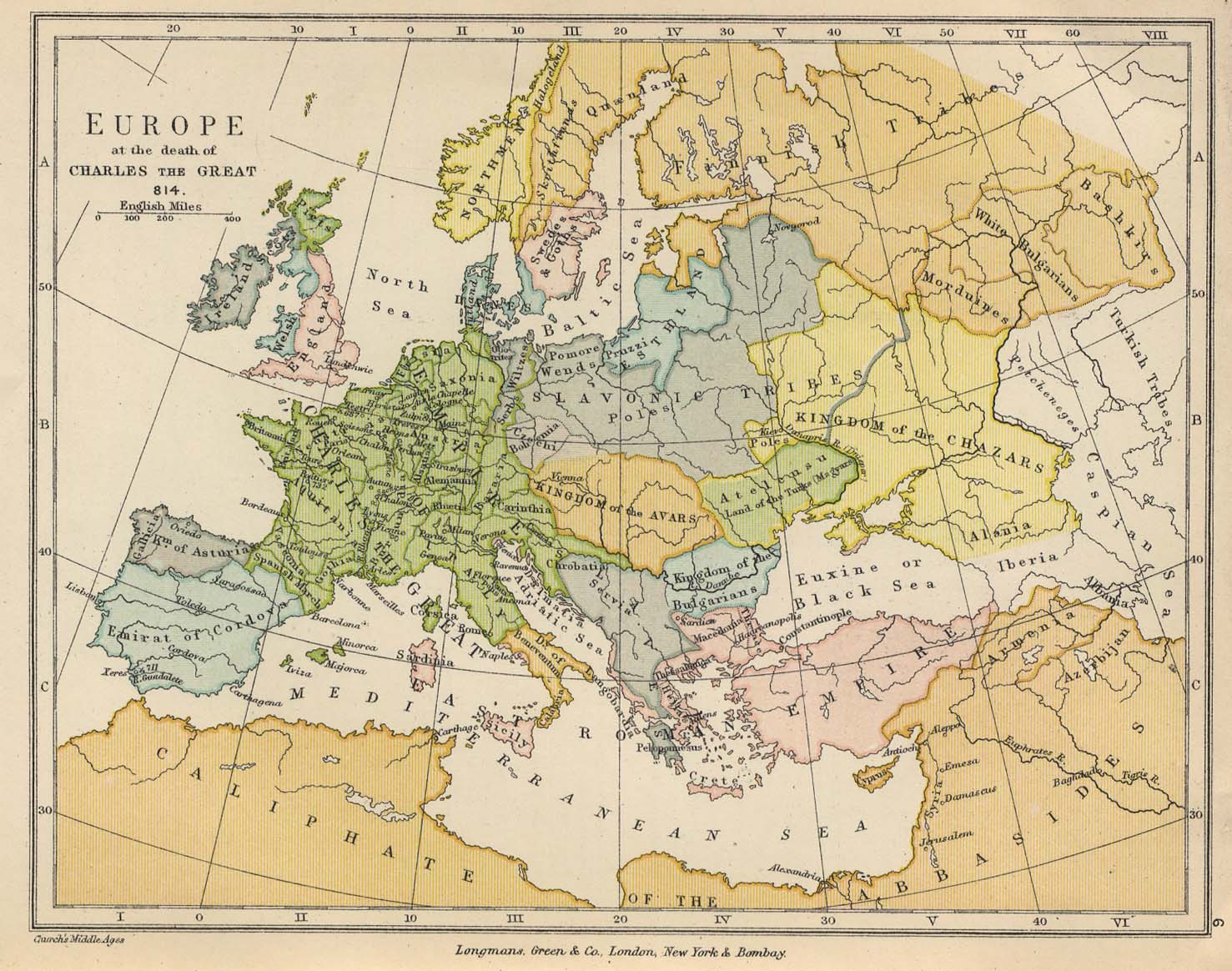
Picture 2. Map of Europe in 814. Serbian lands are marked as "Servia".
How do we know there was no "great migration of Slavs"? There is no Serbian folk tradition nor mythology which remembers some great migration from north to south. (But there are some epic folk poems mentioning India though.) West Slavic and Russian traditions tell they originate from the Danube region. Many Serbian traditions are the same since the Mesolithic Lepenski Vir culture from 9500 BC and the Neolithic Vinča culture from 5700 BC, like the cult of ancestors. Also, I2 Y-DNA haplogroup, which is indigenous to the Balkans, is predominant among the Serbians. (And me too I2 yay!)
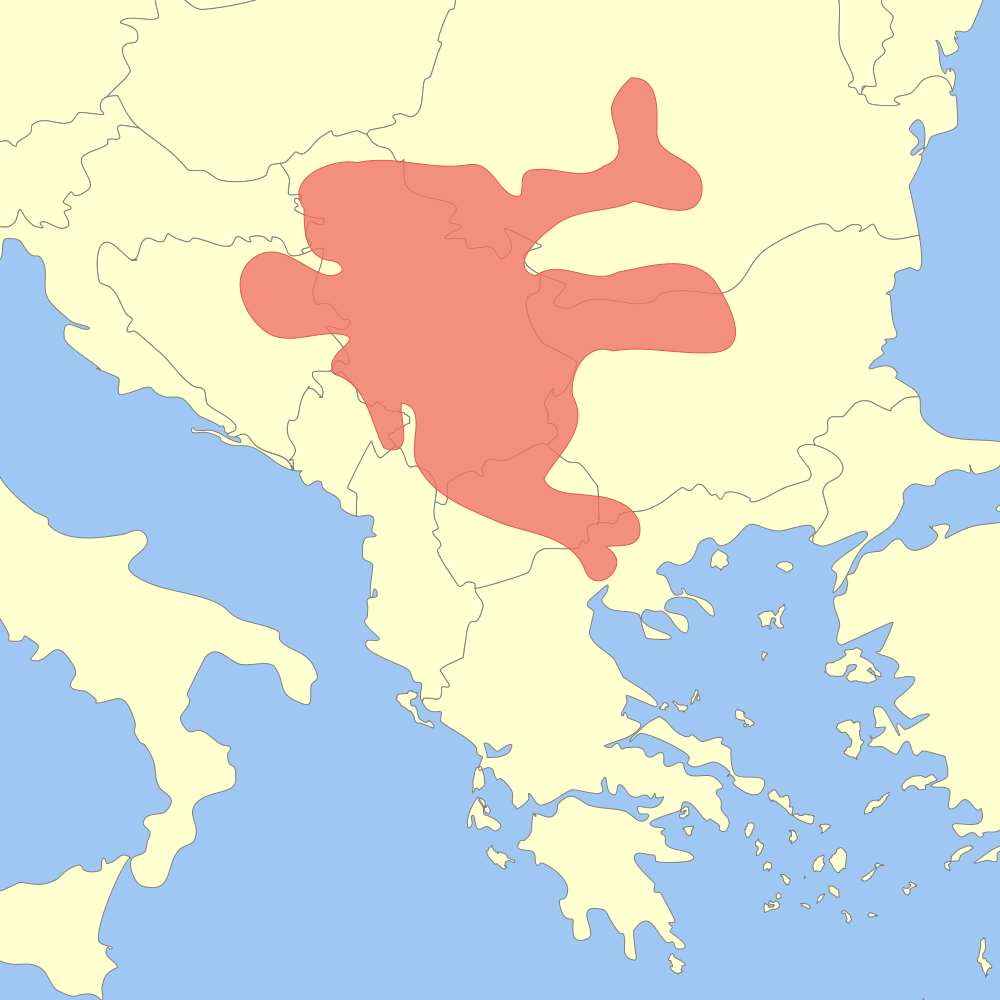
Picture 3. Map of the Vinča culture, it covers almost all of the present-day Serbia.
It is the year of 1043. The Albanians arrive to the Balkans for the first time, that is Shqiptarët as they actually call themselves. They originate from the Caucasus region, from the present-day Azerbaijan. The Arabian Empire controlled that territory at some point, then they brought part of the Albanians to Sicily and south Italy as their auxiliary units.
The Eastern Romans have invaded Serbia in 1042, but suffered a heavy defeat, which caused unrest and civil war in the Eastern Roman Empire. Eastern Roman General on Sicily, Georgios Maniakes, rebelled against Empress Zoë and Emperor Constantine IX, and in 1043 he landed with his troops at the Balkans in the Serbian city of Drač, and marched towards Constantinople. He also brought some Albanians with him as auxiliary units. Because of the war between Serbia and Eastern Roman Empire, Georgios Maniakes had some Serbian political support. But he was defeated by the imperial troops near the city of Thessaloniki and killed in the battle.
The Albanians he brought with himself now couldn't return to Sicily, but also couldn't remain on the Eastern Roman territory, so they asked to settle somewhere in Serbia. Serbian King Dobroslav I Vojislav allowed them to settle in the sparsely populated mountainous region called Raban, which is in the middle of the present-day Albania.
Serbian dynasties after the fall of the Western Roman Empire were: Svevladović (490-641), Svetimirović (641-794), Oštrivojević (794-865), without a King (865-926), Oštrivojević (926-1171).
Now, we are at the end of the 12th century. Serbian ruler Stefan Nemanja (1166-1196) believes that both Rome and Constantinople have fallen into decadence. He writes about a new Serbian Empire, which should become New Israel, a Christian Empire built by a faithful people, a new spiritual center of the World, which we could also call "The Third Rome" placed in the middle between "The First Rome" and "The Second Rome". Serbian house of Nemanjić claimed they descended from the Roman Emperor Licinius, the rival of the Emperor Constantine the Great. Both Licinius and Constantine were of Serbian origin, as some 24 Roman Emperors altogether.
The Crusaders have conquered the city of Constantinople in 1204. When all of the surrounding states recognize the Pope in Rome and the Roman Catholic faith, the youngest son of Stefan Nemanja, Rastko, named Sava as a monk, future Saint Sava, travels to the city of Nicaea in Anatolia, a temporary seat of the Eastern Roman Emperor and Patriarch, to achieve the recognition of the autocephalous Serbian Church in 1219, and he is to be consecrated as the first Serbian Archbishop. After returning to Serbia, Sava crowns his brother Stefan in the monastery of Žiča for the first King in their Nemanjić dynasty. Serbia is now the main bastion of the Eastern Orthodox Christianity.
After the liberation of Constantinople by the Eastern Romans in 1261, their Empire remains just a shadow of its previous glory. Serbian King Milutin (1282-1321) is their ally and the most powerful ruler in the Balkans. At the beginning of the 14th century, Muslim Ottoman Turks are making their first advances into Europe from Anatolia. In 1312, King Milutin sends his Grand Duke Novak Grebostrek to encounter with the Turks. Serbian armies defeat the Turks at Gallipoli and in Anatolia, after which the Eastern Romans organize a Triumph for Novak Grebostrek in the city of Constantinople just like in the good old Roman times.
During the Medieval Serbian Kingdom, Serbian rulers had the title of By the Grace of God Crowned King and Autokrator of all Serbian and Coastal Lands. Those lands were Rascia (present-day Serbia), Bosnia, Zeta (present-day Montenegro), and some more. The center of the Kingdom was at Kosovo and Metohija, as the modern Serbian province is called. Kosovo is the field to the north-east, and Metohija is the plateau to the south-west of the province.
It is popularly believed that "Kosovo" means "field of blackbirds" ("kos"-"blackbird"), but it is more likely that the word comes from "kost"-"bone", meaning "field of bones", as it was a favorite spot for battles. "Metohija" derives from the Greek word "metóchia" meaning "monastic estates", it was the most fertile land gifted to the Church by the Serbian Kings. Prizren was the Serbian capital city at some point, and the city of Peć later became the seat of the Serbian Orthodox Patriarch.
What were the Albanians doing at that time? Keeping livestock on mountains as proper Serbian citizens.
Grandson of King Milutin, King Stefan Uroš IV Dušan Nemanjić (1331-1355), is to achieve the Serbian Christian Empire the founder of his dynasty Stefan Nemanja wrote about.
Dušan managed to liberate most of the Serbian lands from the Eastern Roman Empire. On April 16th 1346 (Easter), Dušan convoked a huge assembly at the city of Skopje (present-day capital city of North Macedonia), attended by the Serbian Archbishop Joanikije II, the Archbishop of Ohrid Nikolaj I, the Bulgarian Patriarch Simeon, and various religious leaders of Mount Athos. The assembly and clerics agreed on, and then ceremonially performed the raising of the autocephalous Serbian Archbishopric to the status of Serbian Patriarchate. Dušan was then crowned for the Emperor and Autokrator of the Serbs and the Romans.
In 1349, Emperor Dušan convoked another assembly of clerics and nobility at the city of Skopje, which proclaimed his Code of Laws, complemented in 1354 - a set of Church and civil laws. Dušan's Code of Laws explicitly stated that the judges are to judge by the law and not by the fear of the Emperor and the Empire. It protected all social classes, although higher classes had more rights. It declared the Roman Catholic faith a heresy. It also condemned some pagan beliefs and customs that were still present.
Emperor Dušan suddenly died in 1355 during his siege of Constantinople, it is believed that he was poisoned by the Eastern Romans.
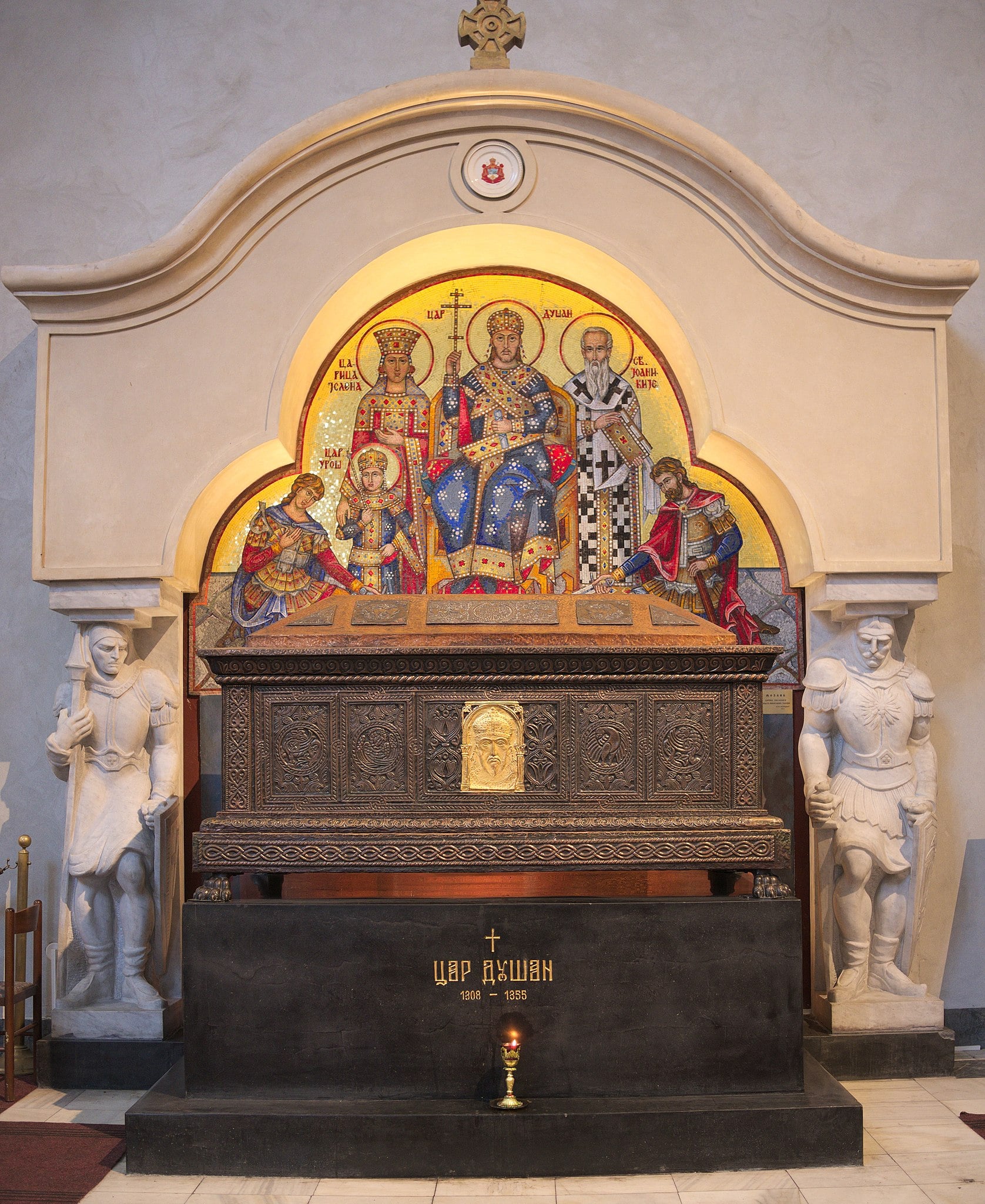
Picture 4. The sarcophagus of Emperor Dušan the Mighty is kept at Saint Mark's church in Belgrade, the capital city of Serbia.
After Dušan's death, his son Uroš V, known as the Weak, was crowned for the Emperor. Local Lords were fighting among themselves for the power, and the new Emperor wasn't able to control the situation. He crowned the most powerful of them, Vukašin Mrnjavčević, for the King and co-ruler, and his son Marko Mrnjavčević for the Young King and the successor to the throne. It seems that there was an agreement with the Eastern Romans that we keep the Patriarchate but give up the Empire and restore the Kingdom.
King Vukašin and his brother Despot Uglješa Mrnjavčević lead their armies to confront the Ottoman Turks in Thrace in 1371. They met with the Turks on the Marica river, and were victorious in the battle. But during the night, they remained relaxed, drinking and celebrating the victory. Some Eastern Roman shepherd brought the remaining Turks to the Serbian camp, and they slaughtered them all at the dawn when they were the most drunk and sleepy and incapable of fighting. This defeat in the Marica Battle in 1371 marked the beginning of the Turkish conquerings of the Serbian lands. Few months later the same year, Emperor Uroš V Nemanjić also dies.
Vukašin's son Marko (1371-1395) becomes de jure King, but de facto he rules only over a small territory in the present-day west North Macedonia. No other Lord recognizes him for the King. But it seems that he was generous and the people loved him. He was both an epic and a tragic figure, the successor to the throne he never truly succeed, a broken image of the Serbian Empire, but also a hope for the restoration of the Serbian Empire. In the end, he died as a Turkish vassal in the Battle of Rovine in the present-day Romania. His last words were: "I pray to the Lord to help the Christians in this war, and that I am the first one to die."
Picture 5. Serbian King Marko Mrnjavčević on the contemporary fresco in his Saint Demetrius monastery near the city of Skopje (present-day North Macedonia). In his right arm he holds the horn with the oil with which the Old Testament Kings were anointed. In his left hand he holds the scroll for the founding of the monastery. He is regarded in the Serbian epic folk poetry as Prince Marko, the most prominent people's hero fighting the Turks, a Serbian Hercules; epic poems about his heroic deeds were popular across the Balkans, in Serbia, Bulgaria, Croatia, through the centuries.
Kosovo Battle
After disintegration of the Serbian Empire, the ruler of Moravian Serbia (central part of the present-day Serbia), Prince Lazar Hrebeljanović, becomes the most powerful of all the Lords. He defeats the Turks in the Battle of Pločnik in 1386. The Turks then seek for revenge. In 1389, they gather large armies, and march towards Serbia. Lazar decides to meet them in Kosovo field. The battle took place on June 28th.
Serbian armies were lead by Prince Lazar in the center; Vuk Branković, whose lands Kosovo belonged to, was on the right flank; Bosnian Duke Vlatko Vuković, sent by Bosnian King Tvrtko I Kotromanić, was on the left flank. At the front was heavy cavalry, and behind was heavy infantry. Turkish armies were lead by Sultan Murad I; on their right flank was his younger son Bayezid; and on the left flank his older son Yakub. At their front was light infantry, and behind was light cavalry. It is estimated that there were around 20,000 Serbian troops and around 40,000 Turkish troops. The battle also saw the first usage of cannons in Europe on both sides, although of no effectiveness.
The battle begun with the storm of the Serbian heavy cavalry, followed by the cloud of arrows fired by the Turkish archers. The Serbian right flank managed to break through the Turkish left flank. There was a knight Miloš Obilić with his group of twelve knights, who vowed before the battle to kill the Turkish Sultan. They reached his camp, and Miloš knocked down Murad I from the horse with his lance, and finished him off with his sword. But then, the group was overwhelmed by the Turks, and Miloš was killed with most of his knights, though few of them survived. Murad I was the only Turkish Sultan to die in a battle.
After the death of the Sultan, Bayezid was sent for reinforcements. But he returned only to see Turkish soldiers fleeing away from the battlefield. Serbian victory was complete. The armies went home, only Prince Lazar remained with a small escort to praise the Lord for the victory in a church. Bayezid then went to seek for the body of his father, when he saw Lazar, surrounded him, and killed him. Then he retreated from Kosovo.
Kosovo Myth
While in reality the Battle of Kosovo was a Serbian victory, in the centuries to come it will be remembered by the people as a Serbian defeat. After the battle, Kosovo remains in Serbia, and Serbian state reaches the maximum of its cultural and economic prosperity. Books copying in monasteries was at its peak. We were producing one third of all European silver, mostly from Novo Brdo in Kosovo, which was a larger city than the contemporary London, and from Srebrenica. But in the end, using disunity among the Serbian Lords, the Turks finally conquered Serbia in 1459. Ottoman Turkey was a modern and well organized empire on the rise, and they were unstoppable for few centuries.
During the Ottoman Turkish occupation, Kosovo Myth was created by the people, blaming the Kosovo Battle for the fall of the Serbian Empire. Something or somebody must have been guilty, and the Battle of Kosovo in 1389 was the latest large event. It is believed that before the battle God proposed a choice to Prince Lazar - whether he will choose to survive and earn a Kingdom on Earth, or he will choose to die and earn the Kingdom of Heaven. And Lazar chose the Kingdom of Heaven. Knight Miloš Obilić who killed Turkish Sultan Murad I was the main hero, while Vuk Branković was despised as the traitor, although he did not commit a treason in reality.
Kosovo Myth makes the foundation of the modern Serbian nation.
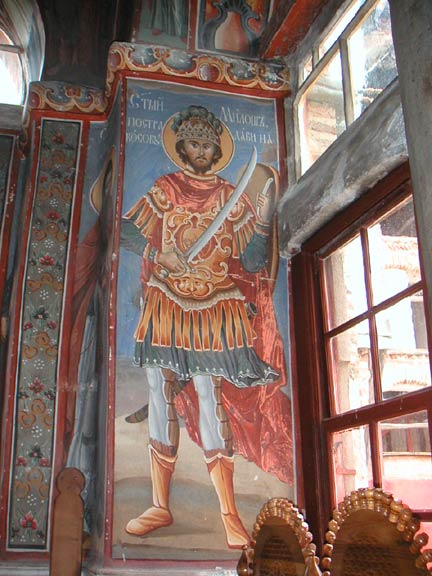
Picture 6. The fresco of knight Miloš Obilić in the Serbian monastery of Hilandar on Mount Athos.
Back to the future
There is one Serbian hero Đurađ Kastriot Skenderbeg from the 15th century who was so fierce and smart warrior the Turks called him İskender Bey after Alexander the Great. His father, Ivan Kastriot, was a Serbian Prince who ruled in Epirus, and his mother, Vojislava Branković, was also of Serbian nobility, a granddaughter of Vuk Branković who fought in Kosovo Battle 1389. Skenderbeg united the present-day Montenegro and the present-day Albania to fight against the Turks. When the Vatican created the Albanian nation in 1912, they took him as the major Albanian hero who shall unite all the different Albanian tribes.
After the fall of the Serbian state, the Papal States begins censoring Serbian name in books and replacing it with "Slavic" name. In the 16th century, the Jesuits have forged a book they called "On the Administration of the Empire" allegedly written by the Eastern Roman Emperor Constantine VII Porphyrogenitus, in which they have invented "great migration of Slavs". Eastern Orthodox Serbian Empire just across the tiny Adriatic sea was the greatest enemy of the Papal States, and they tried everything to prevent its future revival.
From 1683 to 1699, the Austrian Empire is at the war with the Ottoman Empire. The Serbs, lead by their Patriarch Arsenije III Čarnojević, side with the Austrians against the Turks. Austrian and Serbian armies manage to liberate Kosovo. But then, French King Louis XIV attacks Austria on the river Rhine, and Austrian troops are forced to retreat. Escaping from the Turkish revenge, many of the Serbian civilians from Kosovo retreat together with the Austrians. That was the time when the Albanians came to Kosovo in large numbers for the first time and settled on the emptied Serbian lands.
In 1804, the final Serbian uprisings against the Turks begin. It was clear that the Ottoman Empire is doomed. The question was what to do with it. The Serbs wanted to revive their Empire of Dušan the Mighty. But all of the great powers at the time tried to prevent it. Russia didn't want a competition of another Eastern Orthodox Empire in the Balkans, so they pushed for Great Bulgaria as their satellite. Austria wanted to conquer Serbia and add it to their lands. Papal States didn't want an Eastern Orthodox Empire so close to them. United Kingdom tried to save Turkey to prevent Russian influence in the Balkans. And Turkey still saw Serbia as the greatest enemy.
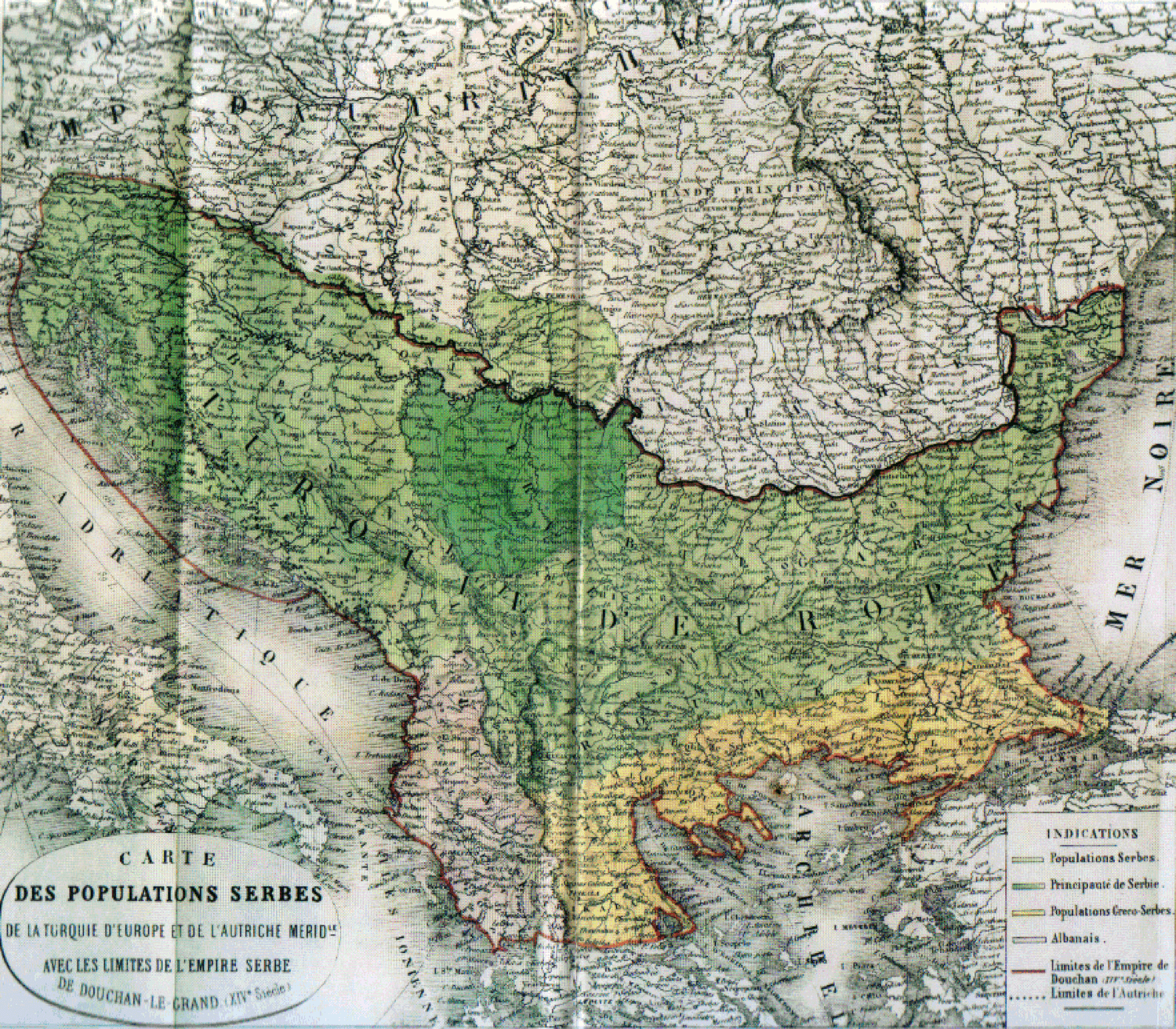
Picture 7. Only the French had a good idea at some point which supported the Serbs. French author Henri Thiers published a book "La Serbie: Son Passé et Son Avenir" ("Serbia: Its Past and Its Future") in 1862. In the book, the French author proposes that the Ottoman Empire is to be replaced by the Serbian Empire. He publishes the map he calls "Map of the Serb population of European Turkey and of Southern Austria with the borders of the Serbian Empire of Dušan the Great (14th century)". He rightfully recognizes all so-called "South Slavs" as Serbs, and suggests that Dušan's Empire covered almost all of the Balkans.

Picture 8. The monument of Serbian Prince Mihailo Obrenović (1839-42 and 1860-68) in the central Belgrade square. He worked on uniting Serbia with Bosnia, Montenegro, Bulgaria, and Romania, in order to create a new Balkan Eastern Orthodox Empire under his lead. He was assassinated in 1868, with Russian and British influence suspected. After his death, a saying was coined, which said: "Your thought shall not perish." But at the Congress of Berlin in 1878, Serbia was forced to give up on expanding its territory, and to accept the so-called "great migration of Slavs" as the official historical teaching.
During the mid 19th century, there was also the Illyrian Movement in Croatia (part of Austria then) for unification of all of the South Slavs, which competed with the idea of the Serbian Empire. The Austrians called South Slavs Illyrians. But as they saw the danger of their unification, in the late 19th century, they have invented a lie, with the support of the Pope in Rome, that the Albanians were the descendants of the ancient Illyrians in the Balkans, and not the South Slavs. And the movement for unification of the South Slavs was renamed Yugoslav instead. They were united after WWI in 1918 in the Kingdom of Serbs Croats and Slovenes, later called the Kingdom of Yugoslavia in 1929.
The Serbians have liberated Kosovo from the Turks in the First Balkan War in 1912. But only six years later, Kingdom of Serbia does not exist anymore, but there is the unified South Slavic state. After the success of the Bolshevik Revolution in Russia, many of the remained White Russians settle in Serbia. Stalin and the Comintern see the Serbs as the enemies of the revolution. The Fifth Congress of the Comintern (1924) explicitly acknowledged the right of Slovenia, Croatia and Macedonia to secede from the Kingdom of Serbs Croats and Slovenes and create independent states. It was also emphasized that assistance should be extended to "the liberation of ethnic Albanians" in Kosovo.
In 1928, the Communist Party of Yugoslavia holds its 4th Congress in Dresden, Weimar Republic. The political platform adopted at the Fourth Congress stressed the absolute necessity of breaking up the common South Slavic state and acknowledged "the right of all oppressed nations – Croats, Slovenes, Macedonians and Montenegrins – to self-determination including secession". The strategy of the Communist Party of Yugoslavia relied on nationalistic anti-Serbian movements. This strategy was based on the resolution of the Third Congress of the CPY aimed against Serbian bourgeoisie perceived as "oppresor" who evolved from "oppressive Serb people".
During WWII, Serbian people sides with America and Britain, while Croatians, Bosnian Muslims, and Kosovo Albanians side with Nazi Germany and Hitler. But Churchill trades Yugoslavia for Greece with Stalin, and in 1944 the Red Army occupies Serbia, bringing Tito's communist partisans on power, and terror against the Serbs that ensued. After Tito's death in 1980, the Marxist plan for disintegration of Yugoslavia enters the scene. The Soviet Union forms Albanian Marxist rebel group in Kosovo with the aim to destabilize and destroy Yugoslavia and Serbia. Later on, in mid 1990s, those Albanian rebels were taken over by the German BND.
During the 1990s, Yugoslav Communists organize a civil war in Yugoslavia and disintegration of the Federation, blaming "oppressive Serb people" for everything - the politics they have adopted during the 1920s. They organize war crimes committed by the criminals who worked for their communist secret service and who played nationalists. The NATO, led by Marxists Tony Blair and Bill Clinton, intervenes against Serbia in 1999, taking Kosovo away from us once again, and implementing the old plan of Stalin and the Comintern to "liberate ethnic Albanians in Kosovo from Serbian oppression".
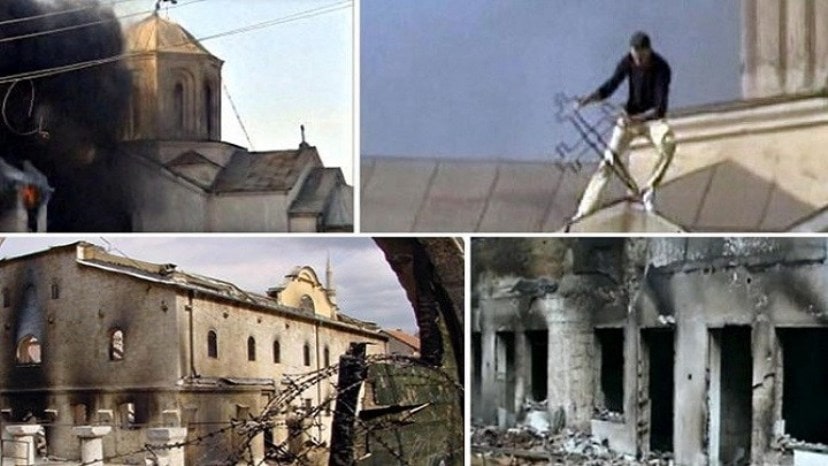
Picture 9. Kosovo Albanians destroying Serbian churches after NATO intervention in 1999.
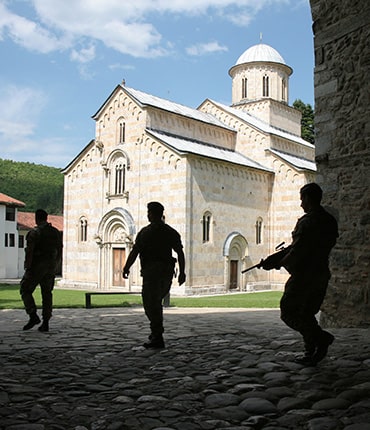
Picture 10. Italian troops guard Serbian Dečani monastery in Kosovo from Albanian terrorists.
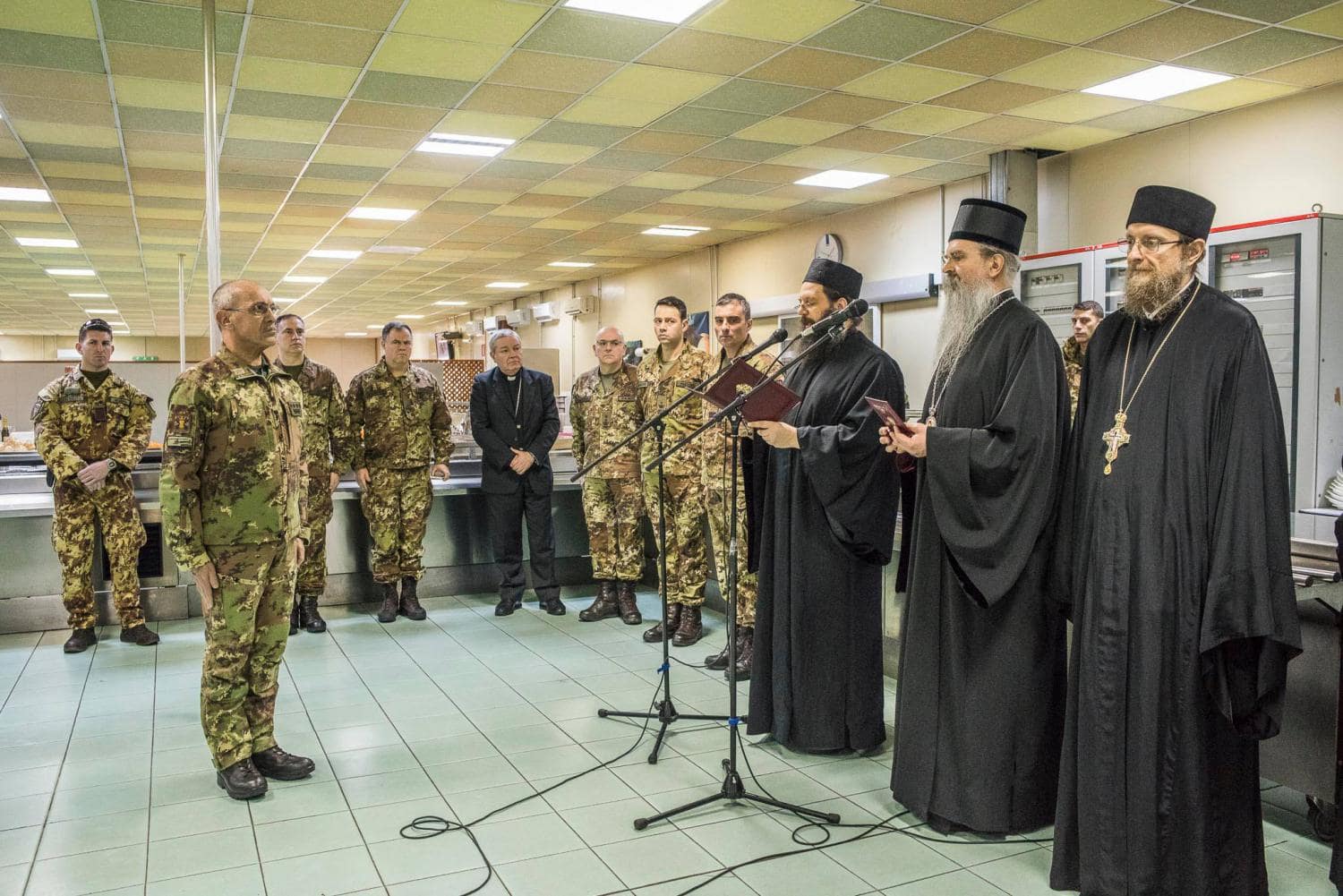
Picture 11. Serbian Orthodox Church gives The Medal of the Holy Emperor Constantine to the Italian Army Chief of Staff in Kosovo Lieutenant General Danilo Errico in 2018.

Picture 12. Monument for Bill Clinton in Kosovo raised by Kosovo Albanians.
Everything in Kosovo has always been Serbian and nothing has ever been Albanian, including the very name of the Serbian origin. Serbs call Kosovo Serbian Jerusalem. Serbian province of Kosovo and Metohija has never had the constitutional right to secede from Serbia. Albanian national minority has never had the constitutional right to secede from Serbia. Not only that Kosovo doesn't have any legal right to be a state, but the Albanians already have their state of Albania, which was also formed on the traditional Serbian land just to mention. So-called "independent Kosovo state" is such a bizarre joke, a farce that needs to end at once.

